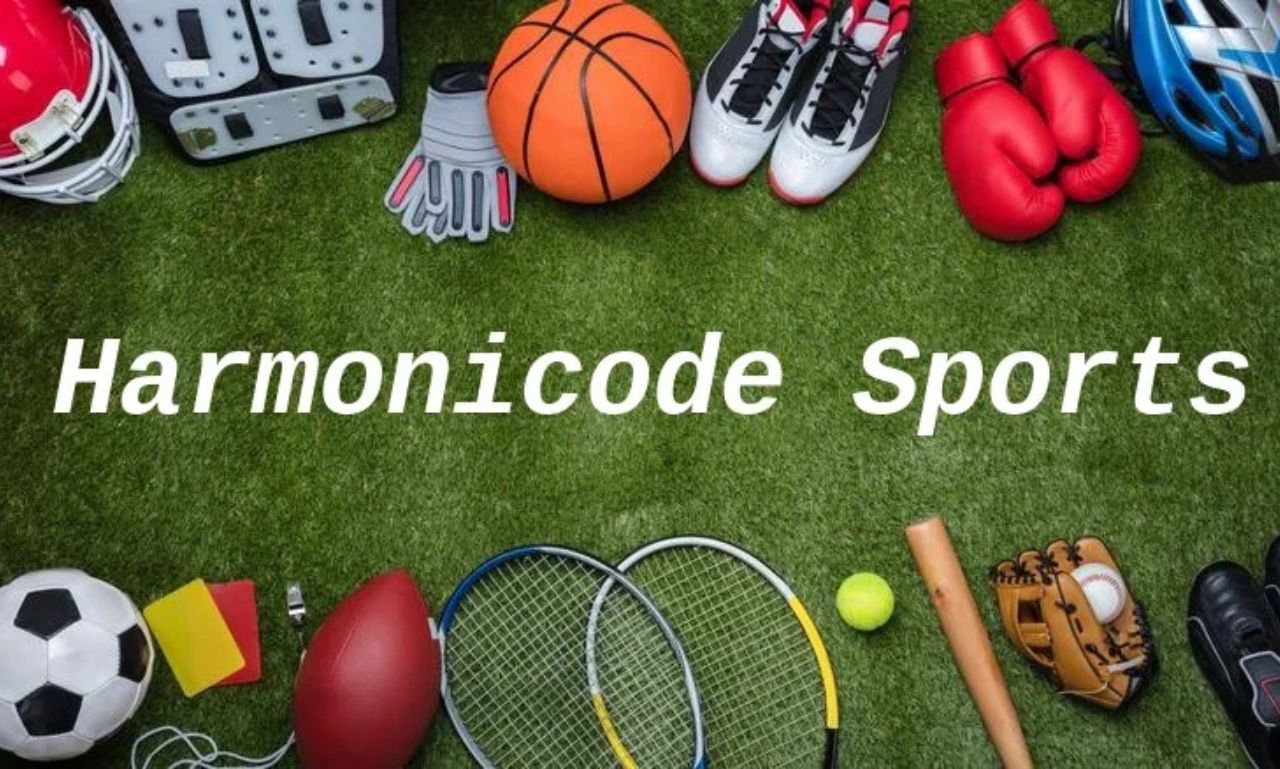The world of professional sports is constantly evolving, and at the heart of this transformation lies data analytics. Teams are no longer just relying on instinct or traditional scouting methods; they’re now harnessing powerful tools to gain a competitive edge. One such groundbreaking tool that has emerged in recent years is Sports Harmonicode. This innovative approach combines cutting-edge technology with deep insights into player performance, game strategy, and fan engagement.
As athletes push their limits and fans become more invested than ever, understanding how to leverage data effectively can make all the difference between victory and defeat. Welcome to the realm of Sports Harmonicode—a place where numbers tell compelling stories and help teams redefine success in ways we never thought possible. Join us as we explore what makes Sports Harmonicode a game-changer in the fast-paced world of professional sports analytics.
What is Sports Harmonicode?
Sports Harmonicode is an innovative framework that redefines how data analytics shapes professional sports. At its core, it integrates intricate algorithms with real-time performance metrics to focus on player dynamics and team strategies.
This platform captures vast amounts of data from various sources. These include game footage, player movements, and even biometric readings. By synthesizing this information, Sports Harmonicode delivers insights that were previously unattainable.
Coaches and analysts can now visualize patterns in gameplay. This allows for precise decision-making based on empirical evidence rather than intuition alone. The result? Enhanced training regimens tailored specifically to individual athletes’ needs.
Furthermore, Sports Harmonicode promotes collaboration among teams by sharing actionable intelligence. This creates a competitive edge while nurturing a culture of continuous improvement within the sport community.
The Evolution of Data Analytics in Professional Sports
Data analytics in professional sports has undergone a remarkable transformation over the years. From basic statistics to complex algorithms, teams now leverage an array of data-driven insights.
In the early days, analysis focused primarily on player performance metrics like points scored or batting averages. As technology advanced, so did analytical methods. The introduction of video analysis changed everything. Coaches began breaking down game footage for strategic advantages.
The rise of wearable technology brought forth real-time tracking systems that monitor players’ physiological responses during games and training sessions. This data is invaluable for health management and performance optimization.
Today, machine learning models analyze vast datasets to predict outcomes and identify trends. Teams are not just reacting anymore; they are proactively shaping strategies based on predictive analytics.
With this evolution comes a deeper understanding of both individual athlete performance and team dynamics. Insights gained from data allow organizations to make informed decisions in recruitment, training, and game strategy development.
Advantages of Using Sports Harmonicode
Sports Harmonicode offers a multitude of advantages that can reshape how teams approach strategy and performance. One significant benefit is its ability to process vast amounts of data quickly, providing insights in real-time.
This speed allows coaches to make timely decisions during games, enhancing their tactical approaches based on live analytics.
Moreover, Sports Harmonicode helps identify player strengths and weaknesses more accurately than traditional methods. This means targeted training regimens can be designed to maximize individual potential.
Additionally, it fosters better communication among team members by presenting complex data in an easily digestible format. Players can understand their roles and contributions through actionable insights derived from the data analysis.
Embracing this technology leads to increased fan engagement. Teams can share compelling statistics and narratives with supporters, enriching the overall sports experience while attracting new audiences eager for deeper involvement.
Case Studies: How Teams are Utilizing Harmonicode
Several teams across different sports have started to embrace Sports Harmonicode, each demonstrating innovative applications of this technology.
One notable example is a professional basketball team that uses Harmonicode to analyze player movements. By tracking intricate patterns during games, coaches can identify strengths and weaknesses in their strategies. This data-driven approach has led to improved performance on the court.
In soccer, a European club implemented Sports Harmonicode for injury prevention. By closely monitoring player biometrics and fatigue levels, medical staff can make informed decisions about training intensity. This proactive strategy minimizes the risk of injuries throughout the season.
Meanwhile, a top-tier rugby federation utilizes harmonic data analysis to enhance its recruitment process. The ability to assess players’ potential through detailed metrics allows scouts to discover hidden talents earlier than ever before.
These diverse case studies showcase how Sports Harmonicode transcends traditional analytics, providing teams with advanced tools for competitive advantage.
The Future of Data Analytics in Sports with Harmonicode
The future of data analytics in sports is set to undergo a dramatic transformation with Sports Harmonicode at the forefront. This innovative approach allows teams to harness comprehensive datasets, revealing insights that were previously hidden.
Imagine coaches and analysts using real-time performance metrics during games. With Sports Harmonicode, they gain access to nuanced player behaviors and strategies instantaneously.
Predictive modeling will evolve as well. Teams can anticipate opponent moves more accurately, leading to smarter plays and better outcomes on the field.
Moreover, fan engagement could reach new heights through personalized experiences driven by this advanced data analysis technology. Fans would enjoy tailored content based on their preferences.
As sports organizations embrace harmonicode-driven solutions, collaboration between tech experts and athletes will flourish, creating an ecosystem where analytics shape every aspect of training and competition. The future looks promising for those ready to adapt and innovate in the realm of sports analytics.
Challenges and Limitations of Sports Harmonicode
While Sports Harmonicode offers promising advancements, it isn’t without its challenges. One significant limitation is the complexity of data integration. Teams often use multiple systems that may not communicate effectively with each other.
Another hurdle is the steep learning curve associated with implementing these advanced analytics tools. Coaches and analysts need training to interpret the data correctly for actionable insights.
Data privacy also poses a concern. As teams gather more personal information about players, maintaining confidentiality becomes critical. Breaches could lead to trust issues within organizations.
Additionally, reliance on technology can overshadow intuition-based decision-making in sports. Balancing analytics with gut feelings remains a delicate act for coaches and managers alike.
Budget constraints limit access to cutting-edge technologies for smaller teams or leagues. This discrepancy creates an uneven playing field in adopting Sports Harmonicode’s benefits across all levels of competition.
Embracing the Next Generation of Data Analytics in Sports
The landscape of sports is rapidly evolving, driven by innovative technologies. Teams are now harnessing the power of data to gain competitive edges.
Sports Harmonicode stands at the forefront of this transformation. It offers insights that were previously unimaginable, reshaping how teams strategize and perform.
With advanced algorithms and real-time analytics, coaches can make informed decisions during games. This immediate feedback loop fosters adaptability on the field.
Athletes benefit too; personalized training regimens based on detailed performance metrics help them reach peak potential. The focus shifts from traditional methods to a more nuanced understanding of player dynamics.
As teams embrace these advancements, they open doors to new possibilities in talent scouting and injury prevention. The future looks bright with Sports Harmonicode leading the charge into an era where precision meets passion in athletics.
Conclusion
The advent of sports harmonicode is paving the way for a new era in data analytics within professional sports. As teams increasingly rely on sophisticated algorithms and analytical tools, they are not just enhancing performance but also transforming how fans engage with their favorite games.
With its unique ability to synthesize vast amounts of data, sports harmonicode stands out as a game-changer. Teams can make informed decisions that affect everything from training regimens to game strategies. This innovative approach enables coaches and players to identify strengths and weaknesses with unprecedented clarity.
As we move forward, the role of sports harmonicode will only grow. With technology evolving at a rapid pace, it promises even more refined insights into player performance and team dynamics. The challenges that come along—data privacy concerns and integration issues—are hurdles that can be overcome through strategic planning.
Embracing this next generation of data analytics means recognizing the potential it holds for revolutionizing professional sports. Whether you’re a fan or part of an organization, keeping an eye on developments in this field could provide valuable insights into where your favorite sport is headed next.

